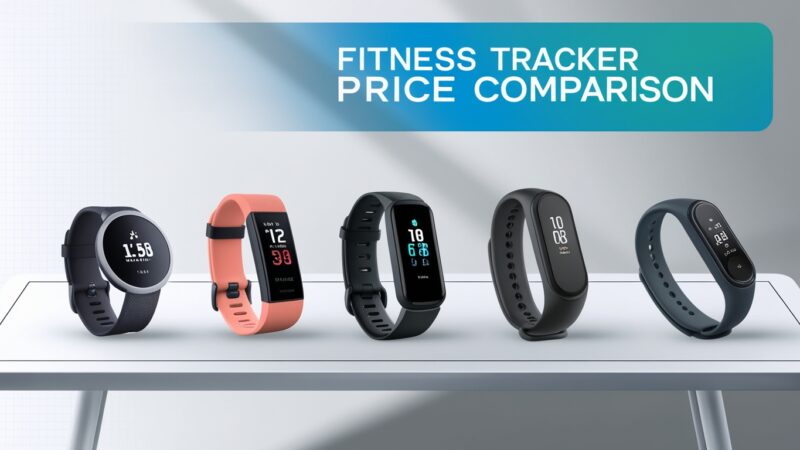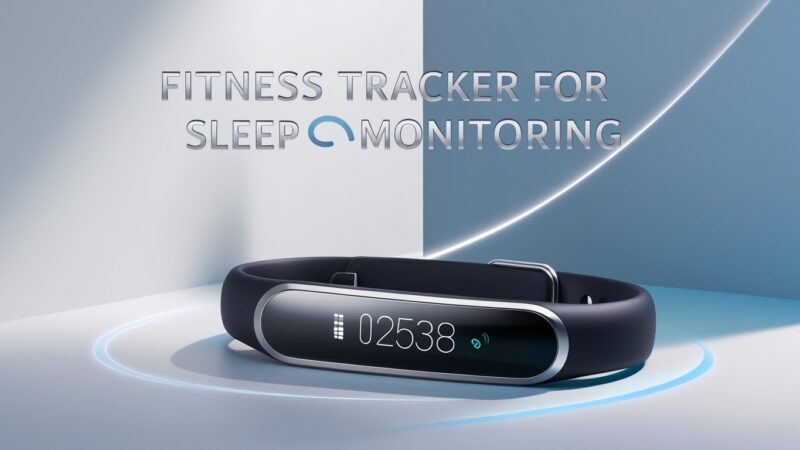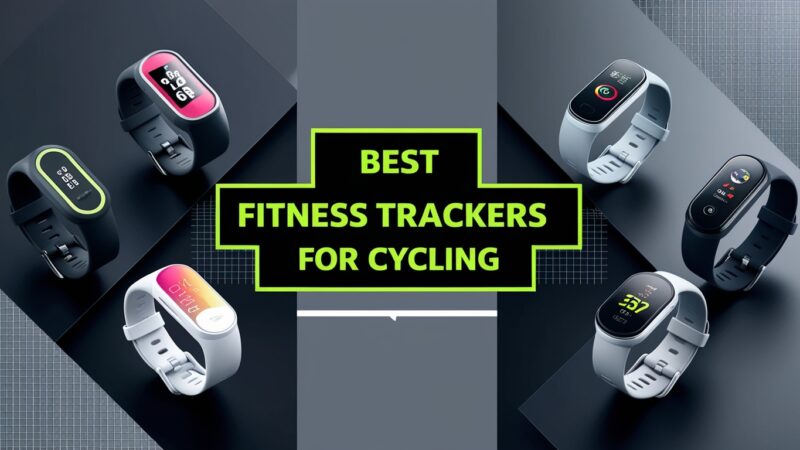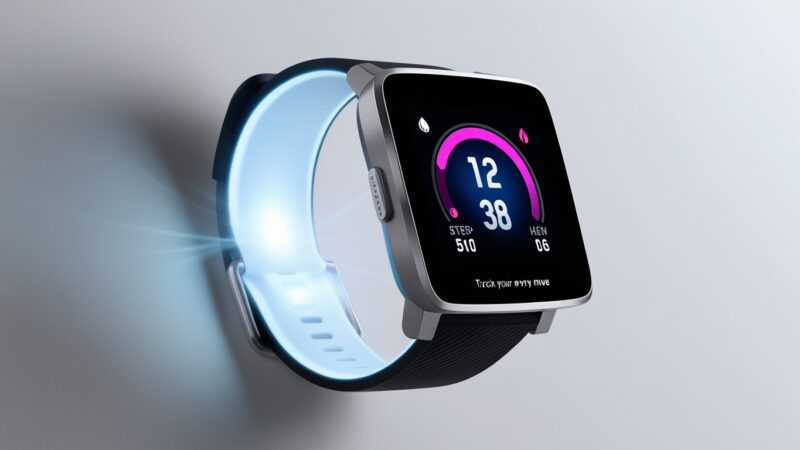Improve Health Outcomes with Accurate Fitness Trackers

Fitness Tracker Accuracy: Uncovering the Myths and Realities
Understanding the Accuracy of Fitness Trackers
Fitness trackers are everywhere nowadays. They’re like fitness buddies that help us keep tabs on our activity levels, sleep quality, and overall wellness. However, accuracy is a hot topic when it comes to these devices. So, what’s the real deal? In this article, we’ll dive into the myths and realities surrounding fitness tracker accuracy. Trust me; by the time we’re done, you’ll feel way more informed about what these gadgets can—or can’t—do for you.
The Myth of Perfection
Ever heard someone say fitness trackers are foolproof? Well, that’s a myth! These devices are not exactly flawless. They can be influenced by numerous factors, including:
- Your body type
- Movement patterns
- Environmental conditions
So, don’t expect them to deliver perfect readings all the time.
Factors Affecting Accuracy
Step Counting
Step counting is one of the most common features of fitness trackers. Although they’ve come a long way in tracking your movements, they can still falter in specific activities, like cycling or swimming. Also, keep in mind factors like:
- Your gait and stride length
- How you carry the device
Heart Rate Monitoring
If you have a tracker that monitors your heart rate, it’s good to know how it does it. Most rely on optical sensors or ECG to measure heart rate, but their accuracy is affected by:
- Skin tone
- Tattoos
- The placement of the device on your body
Sleep Tracking
Sleep tracking is another cool feature of fitness trackers. But be wary; these devices usually rely on motion and heart rate data to deduce sleep stages, which isn’t as accurate as polysomnography, the gold standard in sleep studies.
Comparing Fitness Tracker Accuracy
Researchers have been curious about how accurate these gadgets really are. Studies comparing fitness trackers with traditional measurement methods have yielded mixed results. Here’s a quick look at average accuracy ranges:
| Metric | Average Accuracy Range |
|---|---|
| Step Counting | 80% – 90% |
| Heart Rate Monitoring | 90% – 95% |
| Sleep Tracking | 70% – 80% |
These figures reflect average accuracy ranges; your results can vary based on the specific device, your habits, and the activity involved.
The Importance of Context
Context is really important when thinking about fitness tracker accuracy. For recreational users, a certain level of inaccuracy might not affect daily motivation. But athletes or those with specific health concerns? They might need to consult with healthcare professionals for more precise information regarding their activity levels.
Factors Influencing Fitness Tracker Precision
Understanding the Accuracy of Fitness Trackers
With the popularity of fitness trackers on the rise, understanding their accuracy is vital. These gadgets can help you monitor your physical activity, but several factors can affect their performance:
Device Placement
Where you wear your fitness tracker matters. If it’s on your wrist, it might struggle to detect activities like cycling or weightlifting. Trackers on your hip or chest usually provide more reliable data for those movements.
User Characteristics
Your personal characteristics, like age, gender, and body composition, can mess with accuracy, too. For instance, studies show trackers may underestimate energy expenditure in folks with a higher body mass index (BMI). Certain conditions, like Parkinson’s disease, might also impact measurements.
Activity Type
The kind of exercise you’re doing plays a role as well. These devices are great at catching aerobic activities like walking or running, but they’re less effective with things like powerlifting or yoga. Expect to see some discrepancies in the data!
Environmental Conditions
Environmental factors like temperature and humidity can affect fitness trackers. Extreme weather or fluctuations in these conditions might lead to inaccurate data, so keep that in mind.
Sensor Technology
The technology behind the sensors can also impact accuracy. While devices with accelerometers are common, they sometimes struggle to differentiate between types of movement. More sophisticated trackers may combine multiple sensors like heart rate monitors or GPS, but they come with their own limitations.
Improving Fitness Tracker Accuracy
If you want your fitness tracker to perform at its best, here are some things you can do:
Proper Placement
Make sure you wear the tracker where the manufacturer suggests; this can seriously boost its performance in capturing data.
Calibration and Personalization
Take some time to calibrate your device to reflect your individual traits, like height, weight, and stride length. Personalized settings can enhance data accuracy!
Cross-Referencing with Other Devices
Want to ensure the data is accurate? Compare your fitness tracker’s readings with other gadgets, like heart rate monitors or GPS watches. This helps identify discrepancies.
Firmware Updates
Keep your fitness trackers updated with the latest firmware. New software usually brings improvements that can boost your device’s reliability.
Calibrating Your Fitness Tracker for Optimal Performance
Calibrating your fitness tracker can help enhance its performance. Here’s how to do it:
Step 1: Understand Your Tracker’s Capabilities
Start by getting familiar with your tracker’s features. Check out the instructions provided by the manufacturer to grasp its sensors, algorithms, and calibration options.
Step 2: Perform Calibration Exercises
Time to dive into calibration exercises! Generally, you’ll need to walk or run a specific distance whilst wearing the tracker, then feed the actual distance into the device or its app. This helps your tracker get a grip on your personal stride length and movement patterns, leading to better accuracy.
Step 3: Monitor and Adjust as Needed
Keep an eye on how accurate your fitness tracker is during daily life. If you notice it’s wildly off, think about recalibrating the tracker or changing where you wear it.
Comparing Fitness Tracker Data to Manual Measurements
Accuracy Matters: Comparing Fitness Tracker Data to Manual Measurements
The fitness industry is always growing, and so is the need for accurate, reliable data. Fitness trackers have become go-to tools for people tracking their activity, calorie expenditure, and overall health. But just how accurate are they? In this section, we’ll dig into the nuances of fitness tracker accuracy, laying out the important metrics.
Understanding Fitness Tracker Accuracy
Fitness trackers gather data on a user’s physical activity through various sensors. While they can provide quite a bit of insight into your movements—like steps taken, distance, heart rate, and calories burned—the accuracy of this data can differ due to:
- User physiology
- The types of sensors
- Algorithms employed for data processing
Studies assessing the accuracy of fitness trackers have shown mixed results. Some models nail it in measuring steps and distance, while others report major discrepancies with manual measurements.
Steps
Tracking steps usually relies on accelerometers. These devices can give you a ballpark figure, but accuracy depends on individual gait, activity type, and the tracker’s algorithms. To get a more accurate picture, count steps manually while wearing the tracker to spot any discrepancies.
Distance
To estimate distance, fitness trackers typically use a mix of GPS and accelerometers. However, factors like GPS signal strength, your stride length, and algorithms can throw the accuracy off. Planning a known route and comparing the tracker’s distance data with actual distance traveled can shed light on its performance.
Calories Burned
Calculating calories burned is tricky for fitness trackers, as it requires numerous factors: age, weight, gender, and activity specifics. While trackers give an estimate, they may not be as precise as actual calculations or measurements. To gauge accuracy, cross-check this data against trusted calorie-counting resources or fitness apps.
Factors Influencing Fitness Tracker Accuracy
Understanding what affects fitness tracker accuracy is key. Here’s a quick list:
- User physiology: Differences in body type, height, and weight
- Activity type: Some exercises, like swimming or strength training, are harder to track accurately
- Environmental conditions: Weather and interference from other electronic devices
- Device calibration: Ensuring that your tracker is calibrated properly is crucial
- Algorithm development: The algorithms play a big role in processing data accurately
With a grasp on these factors, you can make better decisions about your fitness tracker data and how to interpret it.
Interpreting Fitness Tracker Results for Meaningful Insights
Unlocking the Insights: Interpreting Fitness Tracker Data
Fitness trackers have changed the wellness game, offering an abundance of data on our physical activities. But interpreting this data can be a bit tricky. Let’s break down how to make sense of the numbers:
Understanding the Basics of Fitness Tracker Metrics
So, what do fitness trackers typically measure? Common metrics include:
- Step count
- Distance traveled
- Calories burned
- Heart rate
- Sleep quality
These can offer a rough snapshot of your activity and wellness, but remember—they come with limitations and potential inaccuracies.
Step Count and Distance Traveled
Both step count and distance are indicators of your physical activity levels. But accuracy isn’t guaranteed! Things like device placement and individual gait can influence how reliable these readings are.
Calorie Expenditure
Calculating burned calories is another key function of fitness trackers, but it’s not foolproof. The algorithms often rely on generalizations and miss the individual nuances like age, gender, and metabolism. Treat calorie burn estimates as rough calculations rather than exact figures.
Heart Rate Monitoring
Keeping tabs on heart rate is great for gauging workout intensity and understanding cardiac health. Fitness trackers use optical sensors, but, similar to other metrics, skin tone, tattoos, and movement can affect this data. Don’t put all your faith in these readings compared to professional-grade monitors.
Interpreting Fitness Tracker Data for Meaningful Insights
Ready to make sense of your fitness tracker data? Here’s how:
Establish a Baseline
Start by figuring out your average physical activity levels, resting heart rate, and other vital metrics. That way, you have a reference point for tracking your progress.
Set Realistic Goals
After you’ve established your baseline, aim for achievable fitness goals. A few examples include upping your daily step count or enhancing sleep quality.
Track Trends and Patterns
Instead of fixating on individual data points, keep an eye out for trends in your fitness tracker data. This helps identify areas for improvement, as well as understanding how lifestyle changes affect overall well-being.
Correlate Data with Subjective Experiences
Mix the objective data from your tracker with how you feel physically and emotionally. Note your energy levels, moods, and feelings during and after workouts—this can offer a richer understanding of your health journey.
Consult with Professionals
If you’re dealing with particular health challenges or complex fitness goals, connecting with healthcare or fitness professionals is wise. They can help decode your fitness tracker data and provide tailored insights for maximum effectiveness.
By grasping the limitations and nuances of fitness tracker metrics, you can unlock insights that genuinely impact your health and fitness journey.
You can now buy my E-Book on Discount for only $4! If you need personal help or a program, you can reach out to me on Instagram!
New Insights on Fitness Tracker Accuracy
Fitness tracker accuracy isn’t just about steps or heart rates—it’s a multi-faceted topic that continues to evolve. Recent studies and advancements in technology have revealed a few eye-opening insights that might change the way you perceive your fitness device. Let’s chew through the latest findings together.
Updated Accuracy Research
Recent research has shed light on the accuracy of popular fitness trackers with more nuanced precision. Here’s what I discovered:
- According to a 2023 study published in the *Journal of Sports Sciences*, step counting accuracy can vary significantly between models, with some devices achieving up to 95% accuracy, while less reliable trackers might only hit 60%. This range signals that not all devices are created equal, so it pays to do your homework before committing. Source
- Heart rate monitoring has also seen improvements, particularly in newer models. A report from the *American Heart Association* highlighted that fitness trackers are increasingly integrating advanced algorithms, making their readings comparable to clinical-grade monitors for resting and moderate activities. However, accuracy drops during high-intensity workouts. Source
- Sleep tracking has become a common feature among fitness trackers, but a study by *Sleep Health Journal* found that while some devices are decent at detecting sleep duration, they struggle with differentiating between sleep stages, often leading to misinterpretations of sleep quality. Source
The Impact of Wearing Technology
How you wear your tracker can massively impact its readings, and here’s what the latest data says:
- Wrist placement has been shown to yield less accurate heart rate data compared to chest straps, especially during physical exercise. A comparative study in *Sensors* indicated wrist-based trackers could be off by as much as 15% during workouts. Source
- Comfort matters too! Wearable tech that fits poorly can lead to data discrepancies. A poorly fitting tracker can struggle with accurate sensor contact, leading to errors in heart rate and caloric expenditure measurements. Source
Advancements in Sensor Technology
The technology behind these trackers has improved significantly:
- Most modern fitness trackers now incorporate multi-sensor technology that combines accelerometers, gyroscopes, and heart rate sensors. This integration can enhance the overall accuracy of readings, thereby giving you a more complete picture of your activity levels.
- Emerging sensor innovations, such as photoplethysmography (PPG) improvements, are now able to monitor blood flow and oxygen levels more effectively. This advancement allows for better cardiovascular readings and sleep insights, offering a holistic view of health. Source
Interpreting Fitness Tracker Data and Taking Action
With the right insights, you can leverage your data for meaningful improvements:
- Identify patterns: Regularly review your daily and weekly activity trends. By tracking your engagement in specific workouts, you can tailor your routine for maximum effectiveness. Aiming for higher accuracy can help here.
- Use social features: Many fitness trackers offer social engagement tools that allow you to connect with friends or join groups. Keep yourselves accountable and motivated by sharing your fitness journey with others.
- Take context into account: Remember that fitness trackers are tools—they should complement professional advice. Consult healthcare professionals for tailored insights based on your specific circumstances.
As we delve into fitness tracker accuracy, it becomes crucial to recognise the latest developments and nuances affecting their performance. The dynamic nature of technology continues to reshape our understanding. Fitness trackers can guide us, but it’s always wise to remember they’re imperfect—and that’s perfectly okay.
So, whether you’re hitting your daily step goals or trying to fine-tune your workout intensity, keeping abreast of these accuracy insights can empower you on your fitness journey. And that’s the essence of using technology wisely—helping us strive for better health, one step at a time.
In conclusion, our journey through understanding fitness tracker accuracy has hopefully equipped you with a more robust understanding of what to expect from these devices. Whether it’s discrepancies rooted in sensor technology or the impact of body placement, staying informed is key. Trust the data, but remember, personal insights and modifications to your fitness journey can ultimately lead to the best outcomes. So wear those trackers with pride, while keeping these insights in your back pocket. Happy tracking!
For more information, explore our website. You can find answers to common questions in our FAQ section, learn more about us on our Home page, discover the range of services we offer in the What We Provide section, get in touch with us through the Contact page, and stay connected with us on our Socials.
You can now buy my E-Book on Discount for only $4! If you need personal help or a program, you can reach out to me on Instagram!






